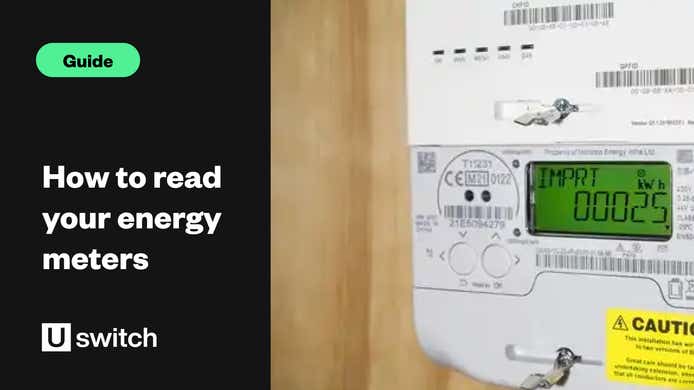Uswitch is encouraging customers to get into a "Check, Track and Change" mentality before every price cap update, whether the level is going up or down.
The current price cap is set £1,717 from 1 October until the end of December for an average use household paying by Direct Debit.
Check
Check what new deals are available to you by running a comparison
As of October 2024, there are competitive, fairly-priced fixed deals on offer that should offer protection against the upcoming energy price rises, and provide peace of mind that your rates will not change for 12 months.
Check your meter readings are up to date
If you don’t have a smart meter, regularly take meter readings (especially the day before the new price cap level comes into effect) and submit them to your supplier. This makes sure your bill is accurate, and lets your supplier modify your direct debit to match your usage.
Check that your monthly direct debit payments reflect your actual use and inform your provider if not
This ensures you’re paying the right amount for your usage. Any credit you’ve built up over the summer can be used over the winter months, which tends to be when your usage exceeds your monthly direct debits.
Check what energy support schemes or grants you, or any vulnerable friends or relatives, may qualify for
If you are struggling with your bills, there may be help available depending on your circumstances. The government runs the Warm Home Discount scheme, where those eligible can receive £150 to help with bills during the winter, in addition to the Great British Insulation Scheme. Councils are also offering help through the Household Support Fund, and many suppliers also have their own customer support funds.
Check if your boiler is working
It's not ideal to discover your boiler isn’t working once the temperature drops suddenly. Consider getting it serviced if you haven’t had done so in the last 12 months. If you have an older boiler, you may want to consider boiler cover.
Track
Track your usage
Energy prices are still high, and we use more energy in winter than we do during the summer. It’s worth monitoring how much energy you’re using by downloading Uswitch's app that connects to your smart meter to provide regular insights into your energy spend. It also includes useful tips on how to cut usage. In addition, with an accuracy rating of 95.5% according to recent smart meter statistics, having such a device installed in your home means you're more likely to be charged accurately for the energy you use.
Track energy market news
The energy market remains unpredictable, so it’s a good idea to keep an eye on your energy tariff options. Whether you’re offered a tariff from your supplier or you find a new fixed deal, it’s worth running an energy comparison to see if it’s the best option for you. You can also sign up to deal alerts from Uswitch when you compare energy prices.
Change
Change your thermostat and boiler settings
Check the temperature on your thermostat and adjust it if required. The World Health Organisation suggests most healthy people should heat their homes to 18°C. Reducing the flow rate on combination boilers to around 60°C can cut heating bills, and you won’t notice the difference.
Change your radiator settings
Get ahead of the first cold spell by checking if your radiators are up to scratch. Bleeding your radiators will prevent cold spots, and you may want to consider turning radiator valves down – or off – in the rooms you use less often. Keep your radiators free from obstructions, like furniture, for maximum heat.
Change the way you use your appliances
Tracking your usage may help you see how changing some habits can make a difference in your home. Whether that’s setting your wash cycle at a lower temperature or eco mode, ditching the tumble dryer, or running the dishwasher only with a full load, small changes may have a big impact on your next meter reading.
Change your door seals and window dressings
Draught-proofing is a quick and cost-effective way to prevent heat escaping, which could save you between £35 and £50 per year. Fitting door seals between doors and frames, attaching brushes under draughty external doors and using chimney balloons all keep the heat in. Thermal and lined curtains also prevent heat loss.




